With the move to the new house, construction started on the new Observatory in May 2011.
With a complete blank sheet of paper, I settled on the following design.
- Roll off roof.
- Warm room for computers and a human.
- 3.6mtr x 2.7 mtr floor plan.
- All wood construction to reduce costs and allow the ability to repair any part at a later date.
- Bitumen corrugated roof.
- Low 1.5mtr high sides to allow full view at low elevations.
- Observatory oriented roughly North /South, with roof rolling off to the North.
- Close to the house for security and access
- Full 360 degree all sky access.
- Observatory raised off ground to prevent rot
- 1 sq Mtr concrete block for scope pier mounting.
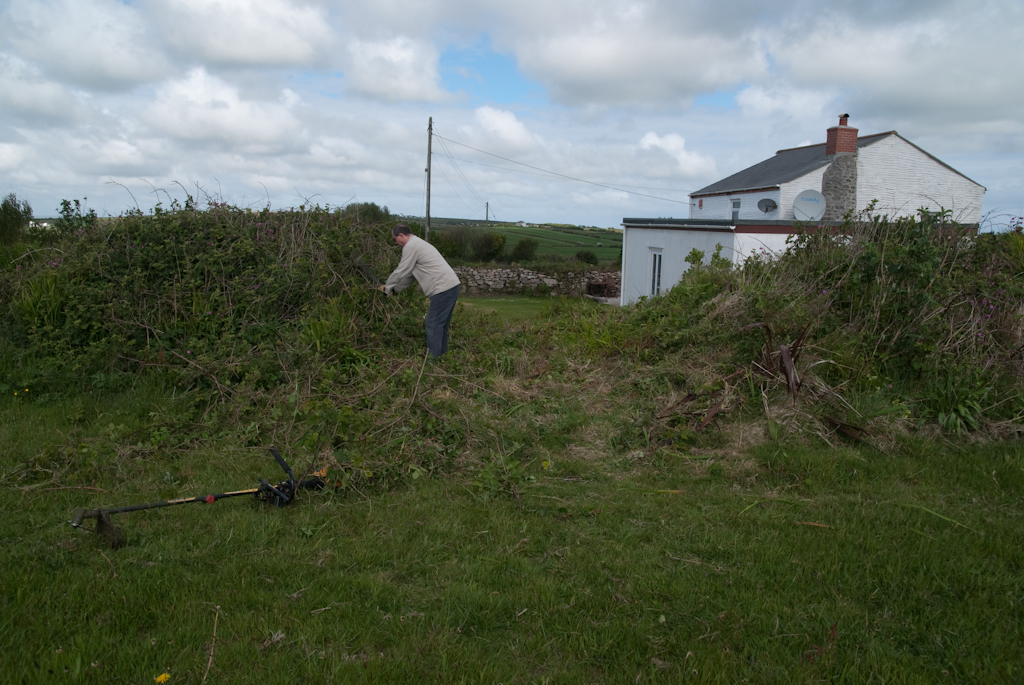
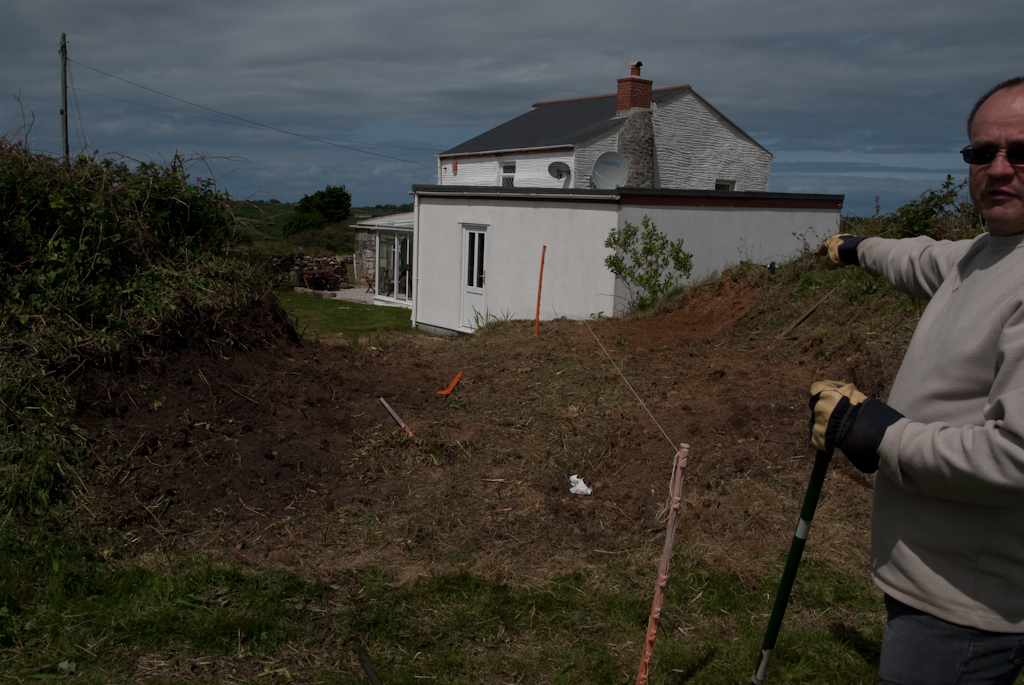
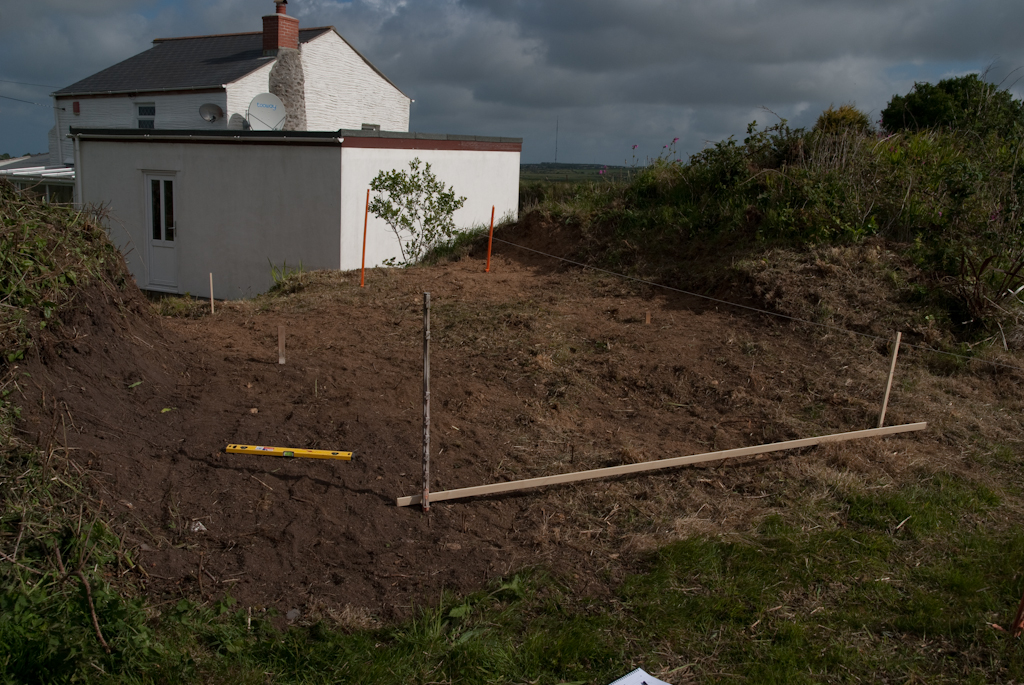
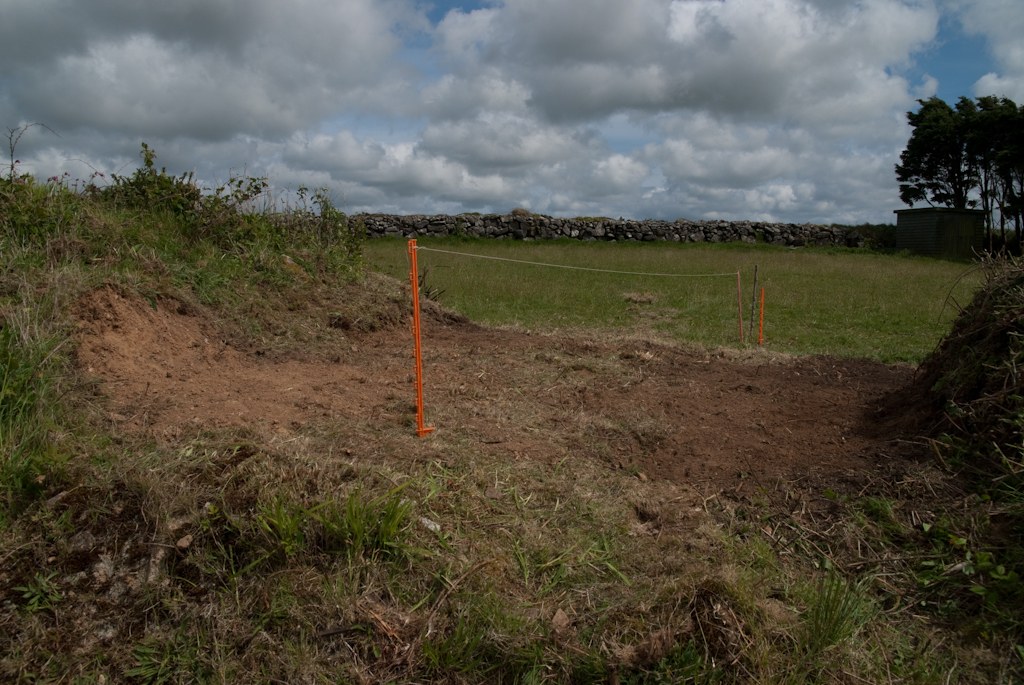
But first we had to clear the ground and layout the centreline.


With all that worked out, I calculated the structure needed to s.it on six 40mm square concrete pillars, which are sunk 600mm into the ground. The 125mm x 50mm framework formed the base of the observatory and these sat on the six piers, which are raised above ground level.
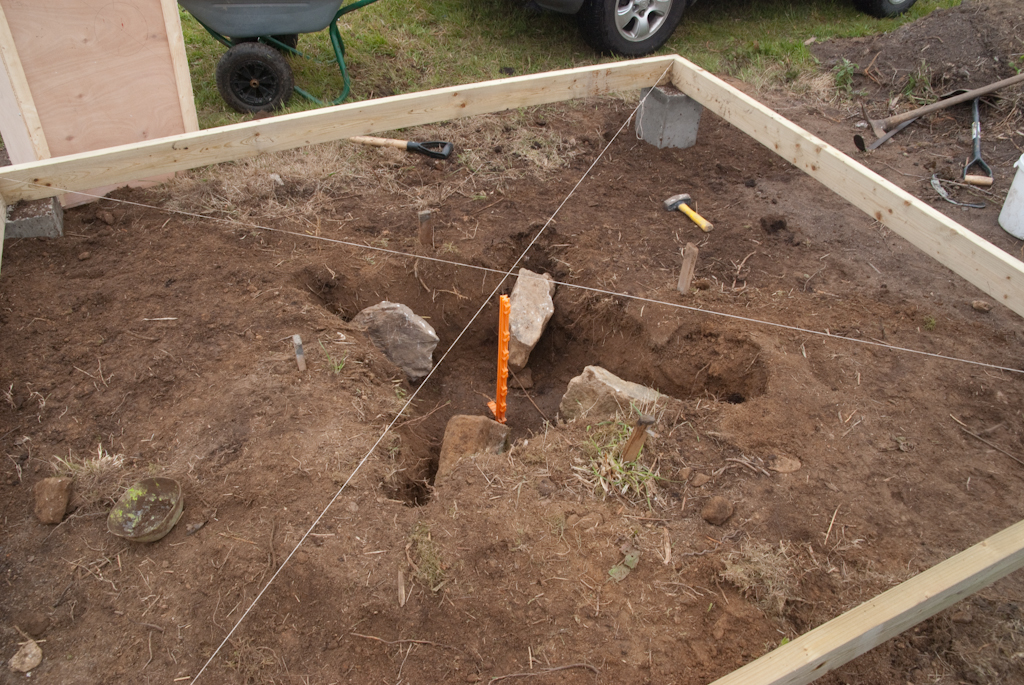
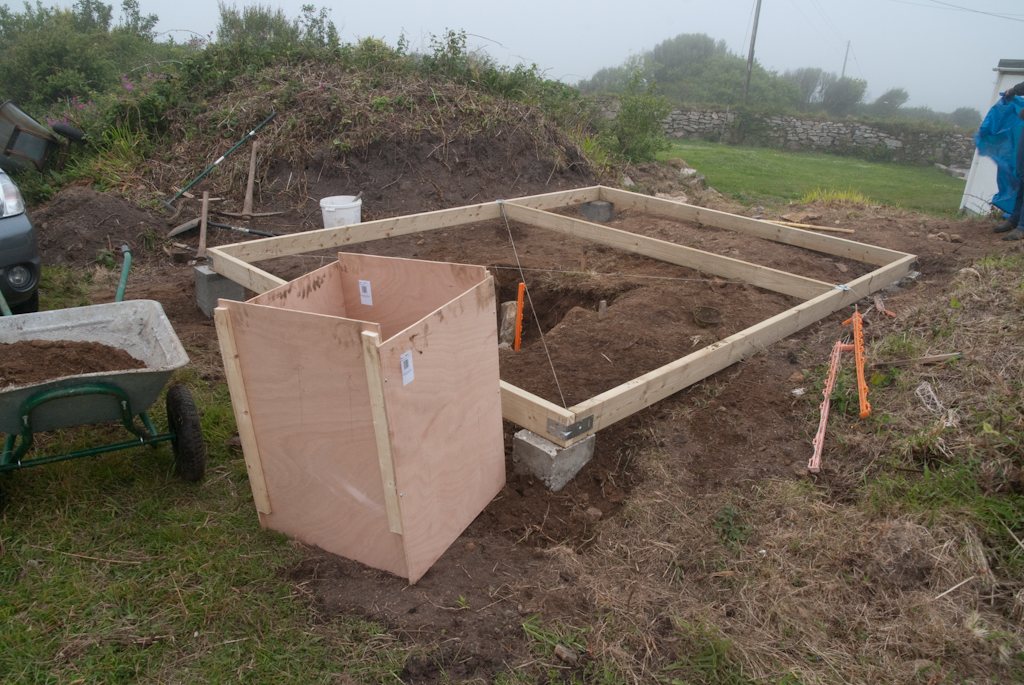
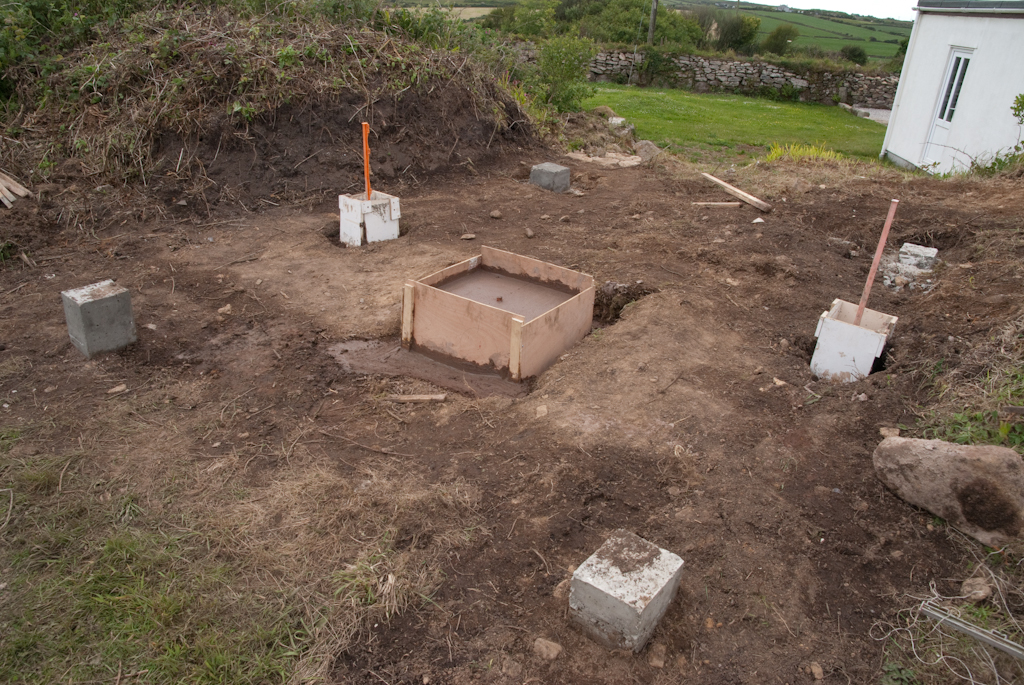

In the centre of the 2.4 mtr x 2.7 mtr observing area, I dug a hole sufficient to take a 1sq meter concrete block which would give the telescope pier a very stable and vibration free platform. This block stopped just below the observatory.
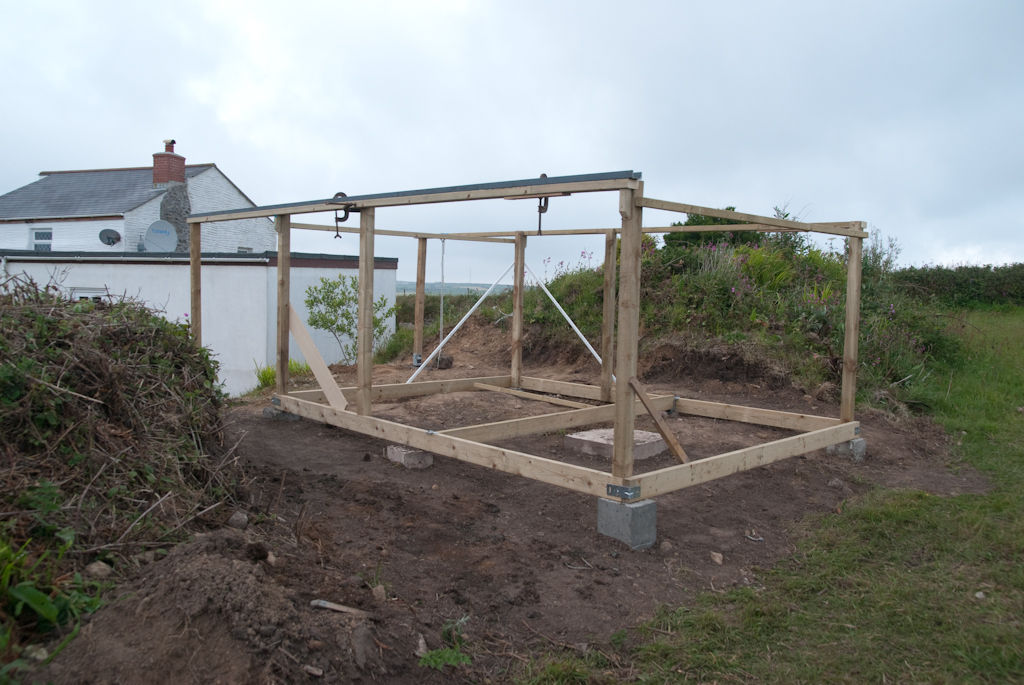
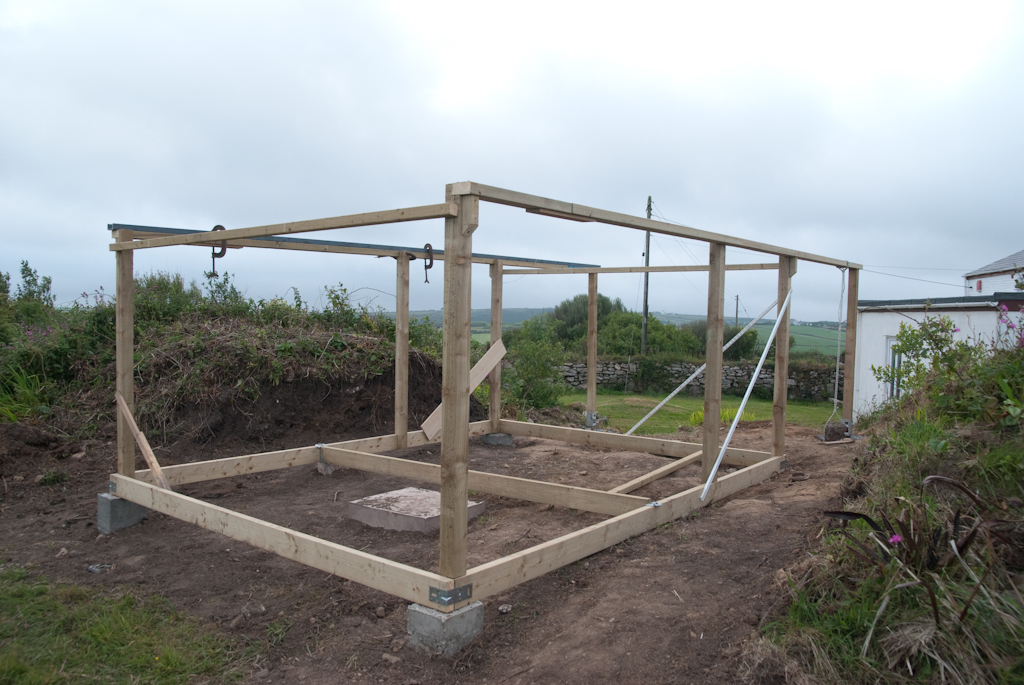
Once done, I was ready to start of the framework. This consisted of six 75mm x 75mm uprights – four at the corners and two at the point between the cold and warm sections. Additional 50mm x 50mm uprights filled in the open areas to allow sufficient fixing points for the clapboard outer sheathing.
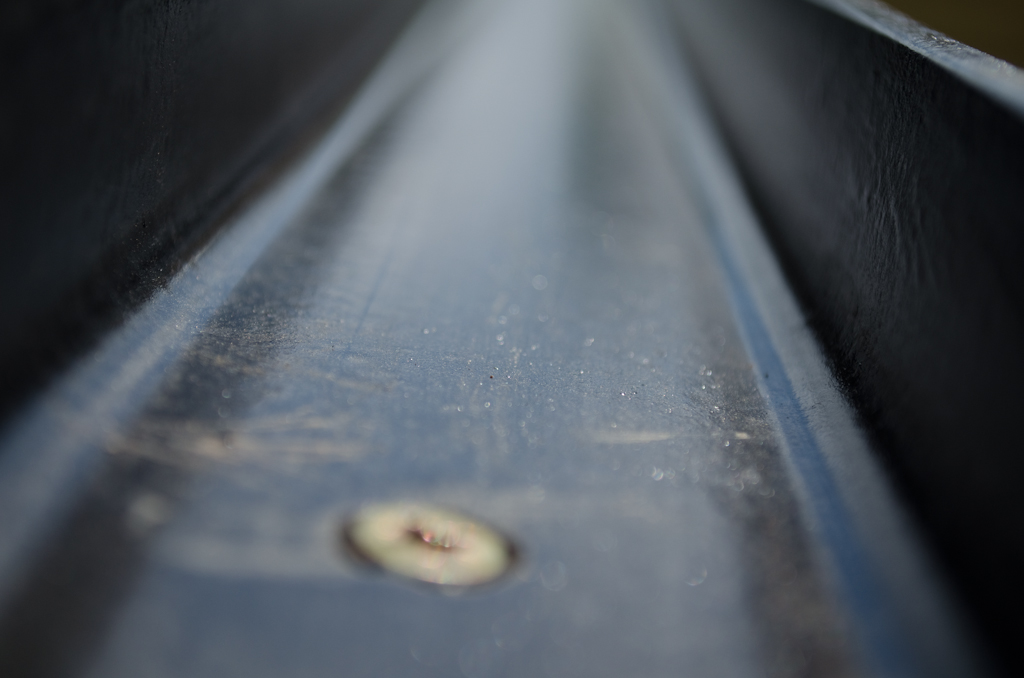
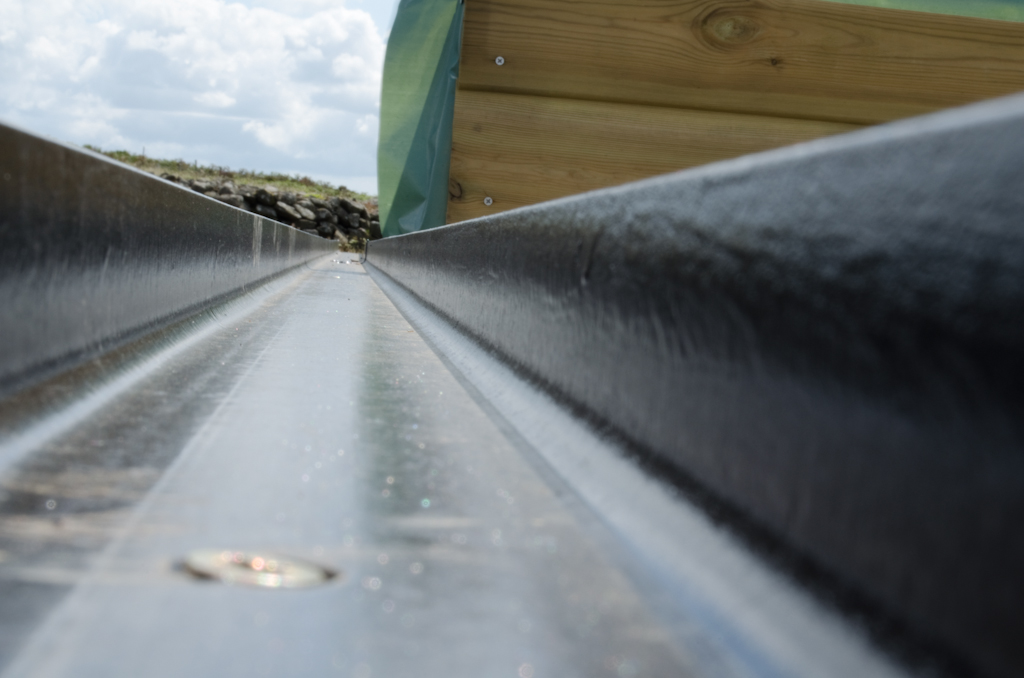
The roof runs on inverted trolley wheels attached to a base framework. The wheels run within ‘U’ section steel channel, bolted to 100mm x 50mm bearers running each side and along the length of the structure.
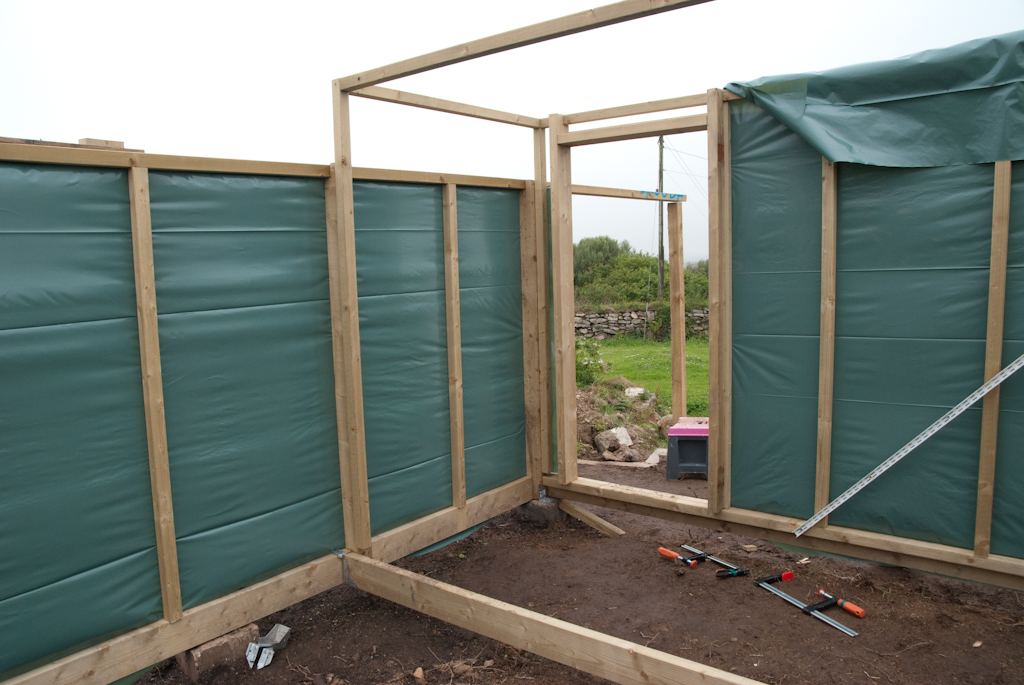
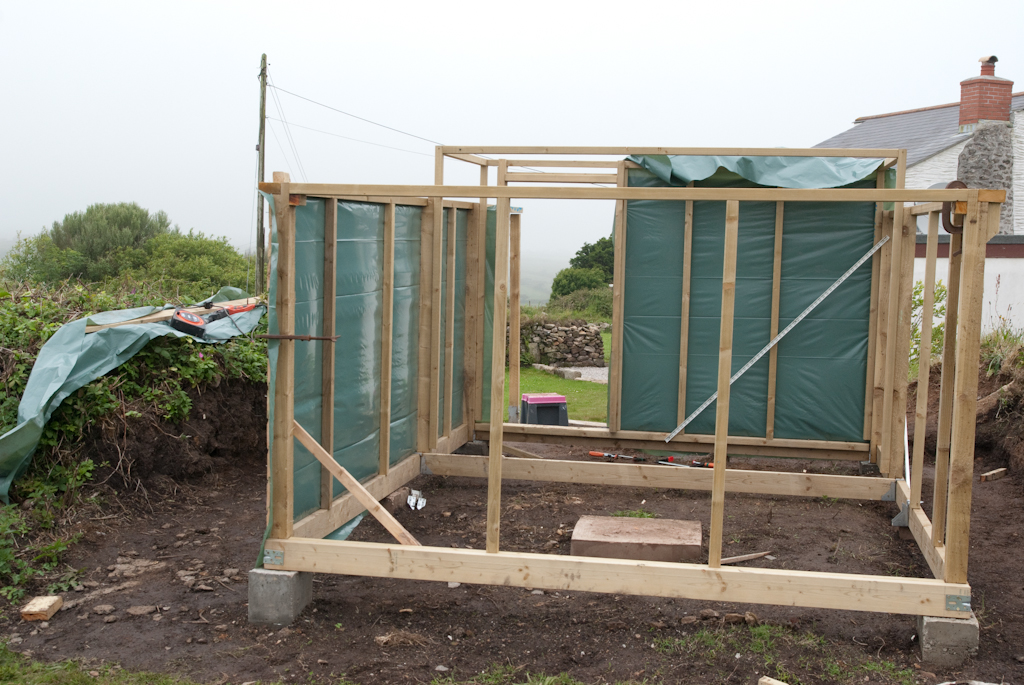
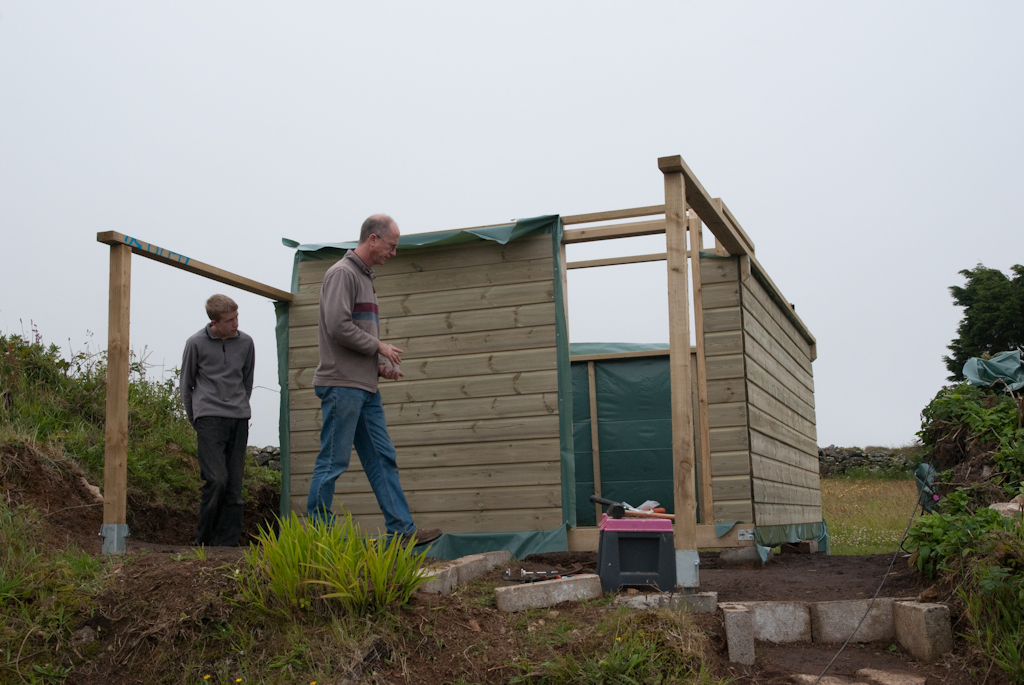

Once the framework was complete PVC plastic sheeting was stapled to the outside of the framework and then covered with 155mm x 19mm tanalised clapboard. Rather than nail these to the framework, everything was fixed using galvanised woods crews. This allows for easy removal of any component should repair be necessary. You can just make out the warm room framework at the North end of the observatory on the image above. This is higher than the open section and the roll off roof rolls over the warm room roof.
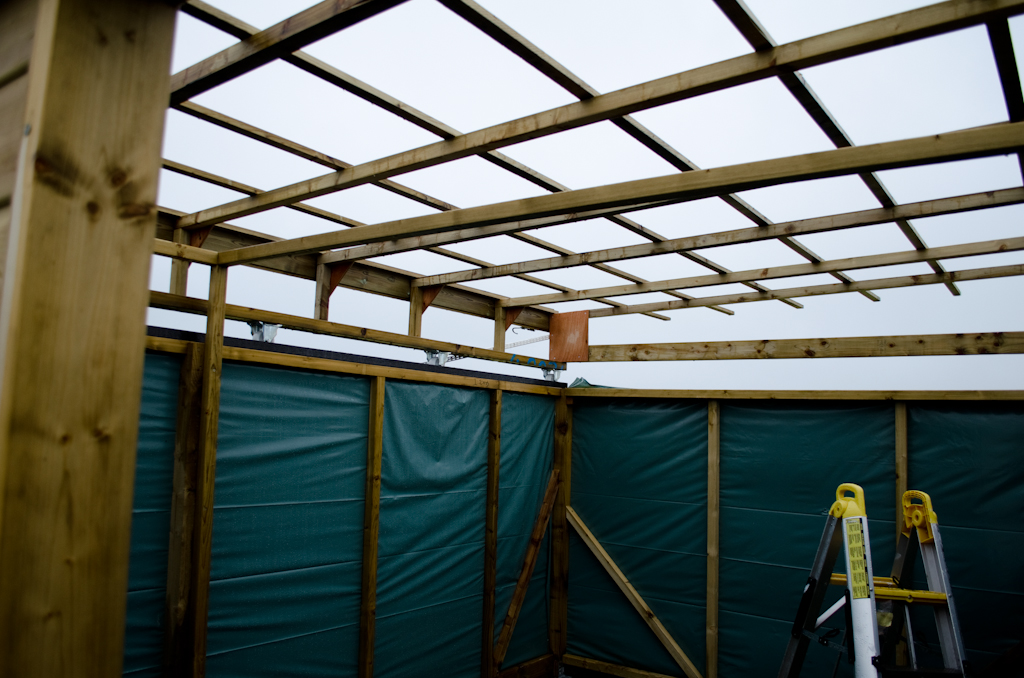
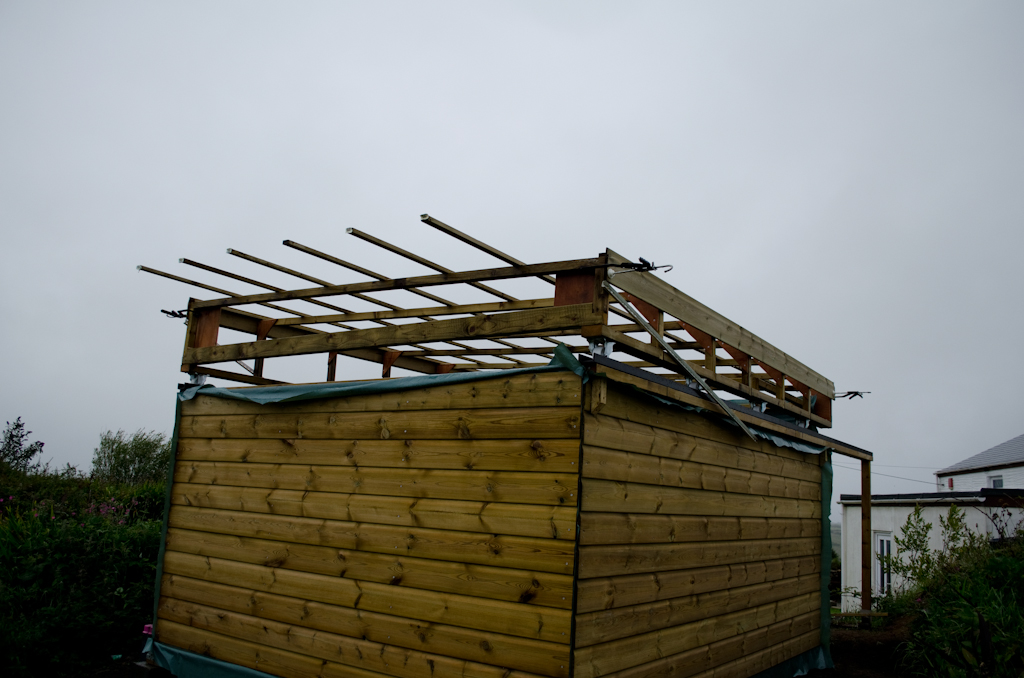

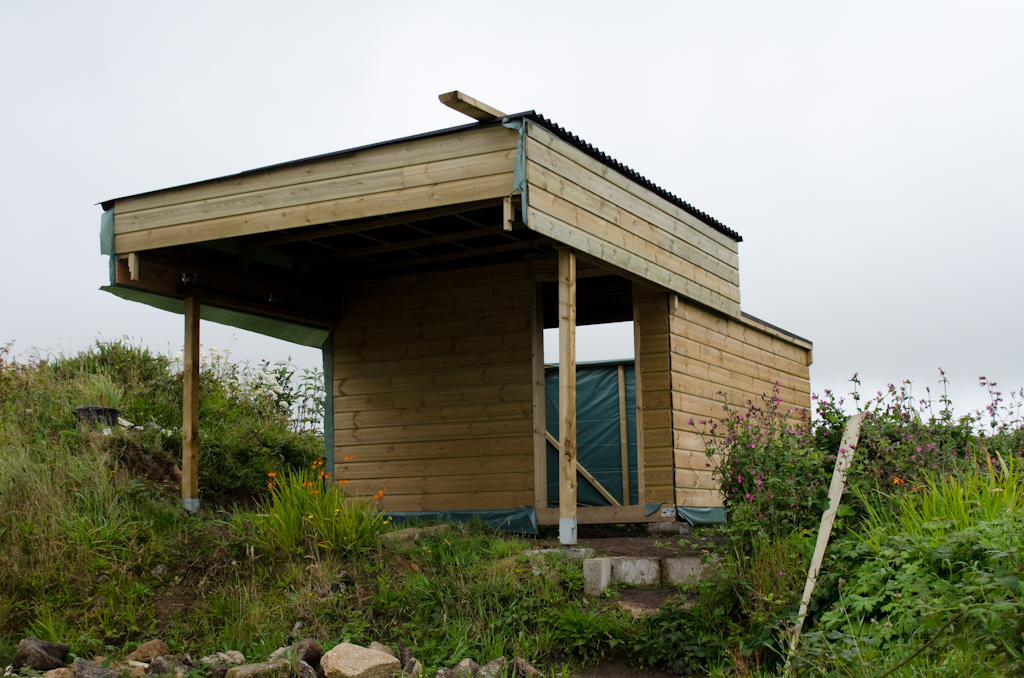
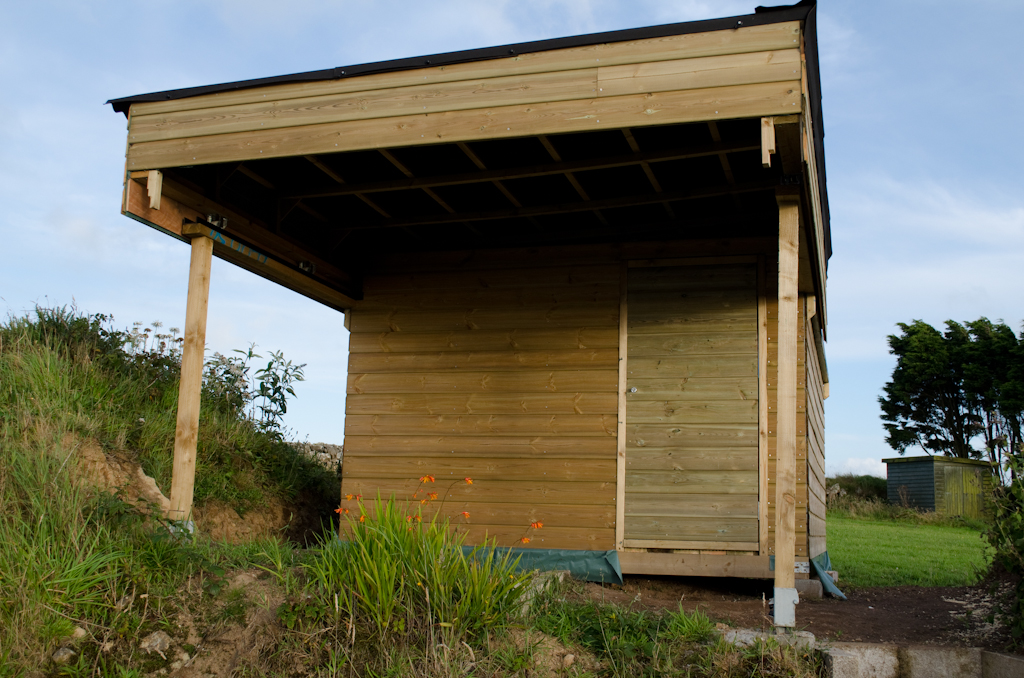
The roof was constructed in a similar manner using the same 50mm x 50mm framework. Three sides of the roof protruded below the outer edges of the observatory allowing a leak free seal. The Southern end which has to roll over the observatory base retained its watertight integrity with a 5mm clearance and a fixed outer board fixed to the observatory base and covering the gap. When closed, even in driving horizontal rain, the roof join never leaks. The sizes of the roof were covered in clapboard, and the roof was sheathed in a bitumen corrugated sheets, with a generous overlap coming downs the side to retain water tight integrity. The roof ended up a lot heavier than I had hoped and was only just possible to open it without assistance 🙁
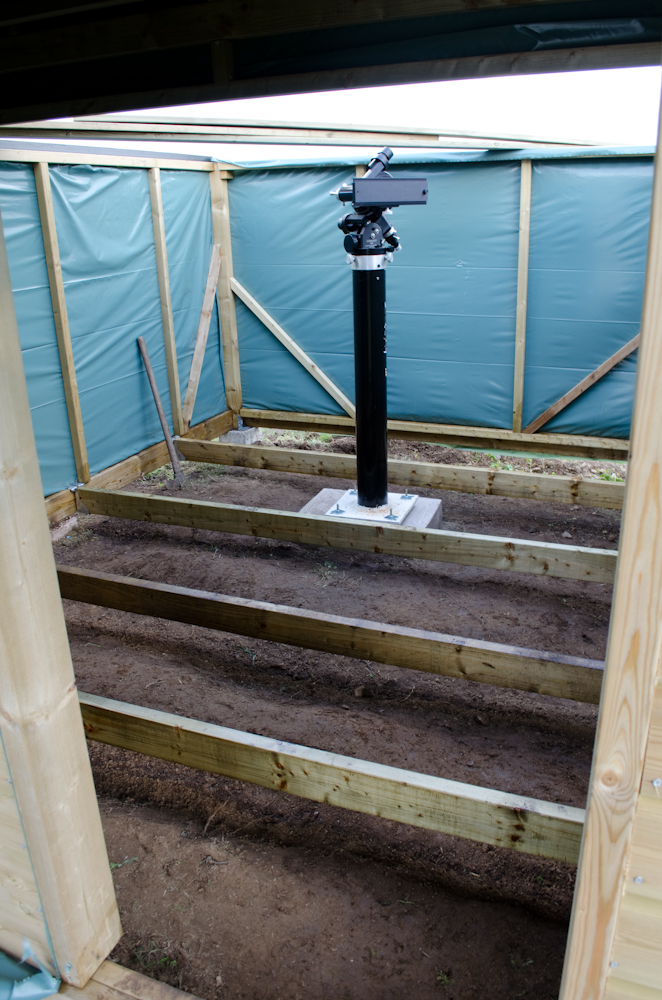
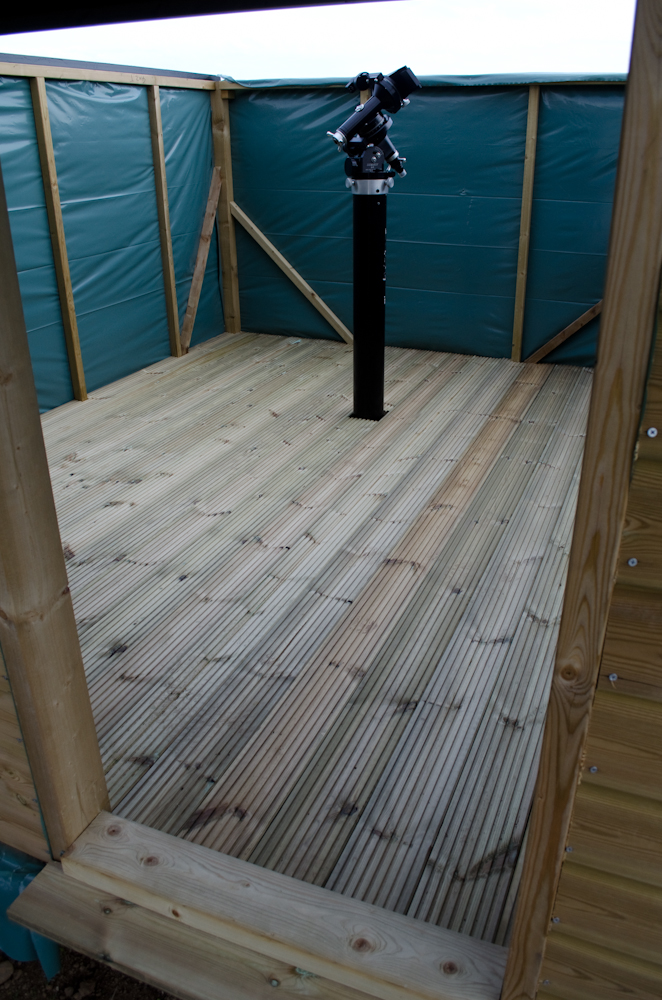
The floor was constructed using 150mm x 25mm decking wood, which was screwed to the base framework. The inside of both the warm and cold rooms was lined with WBP 9mm plywood sheet. While this was done purely for cosmetic reasons, these sheets added considerable strength to the structure, which is rock solid.
The pier from the old DBO was was reused, but I cut it down to about 1.2 metres high – a height which allows the scope to just peer over the top of three of the observatory sides.
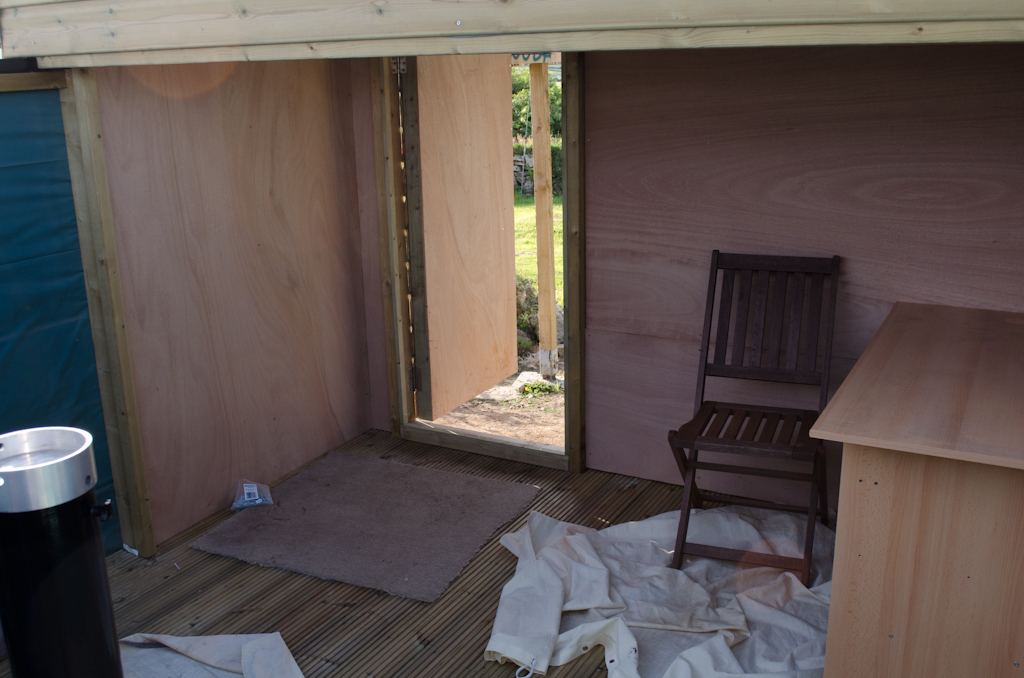
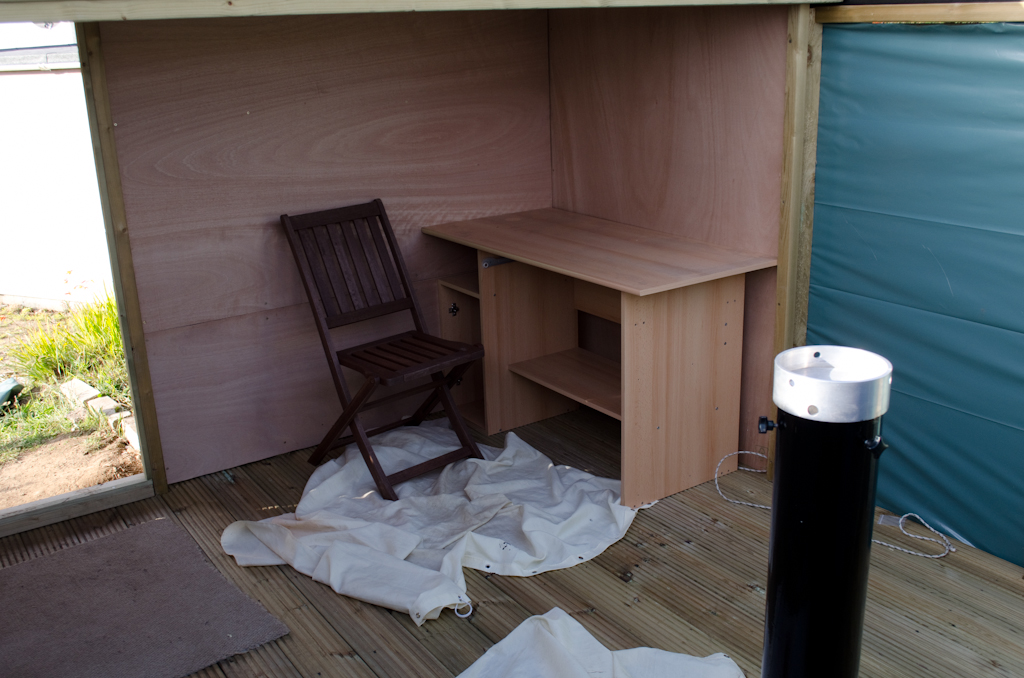
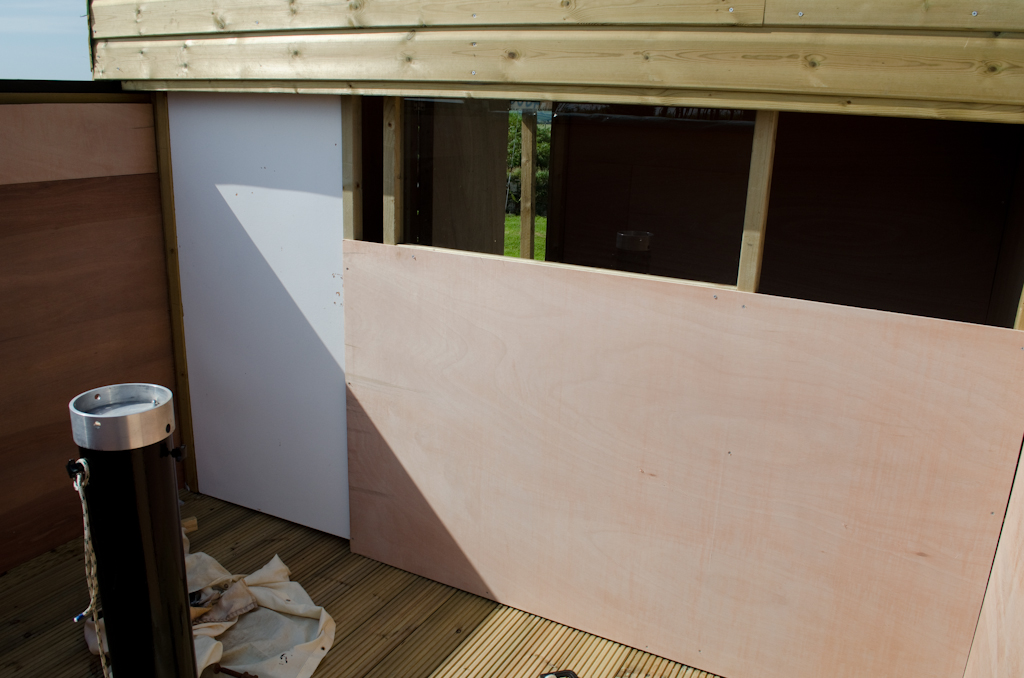
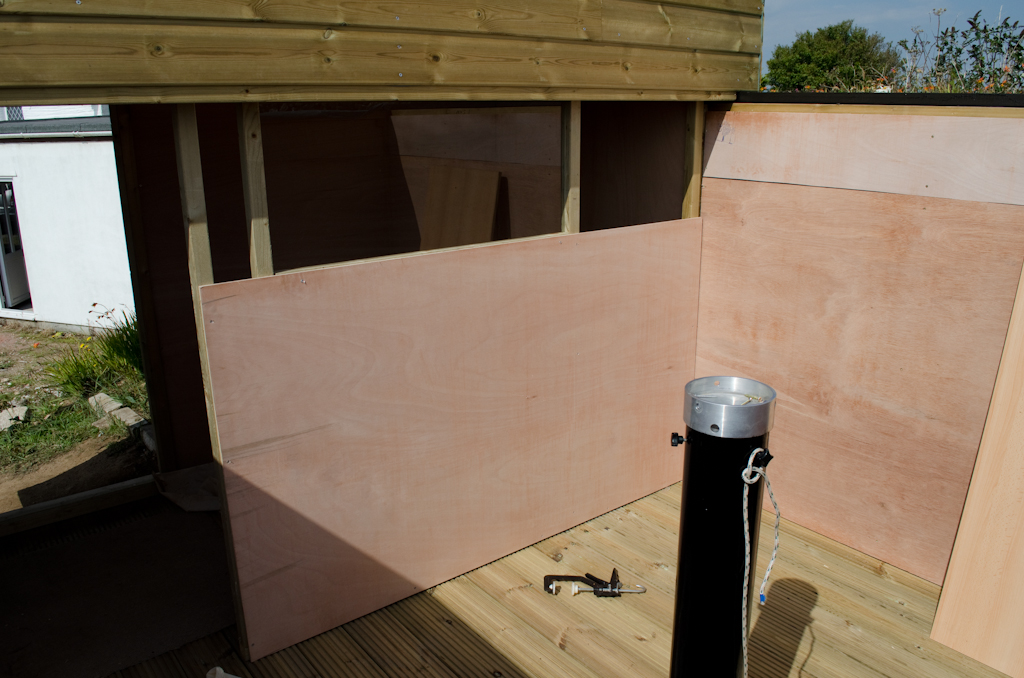
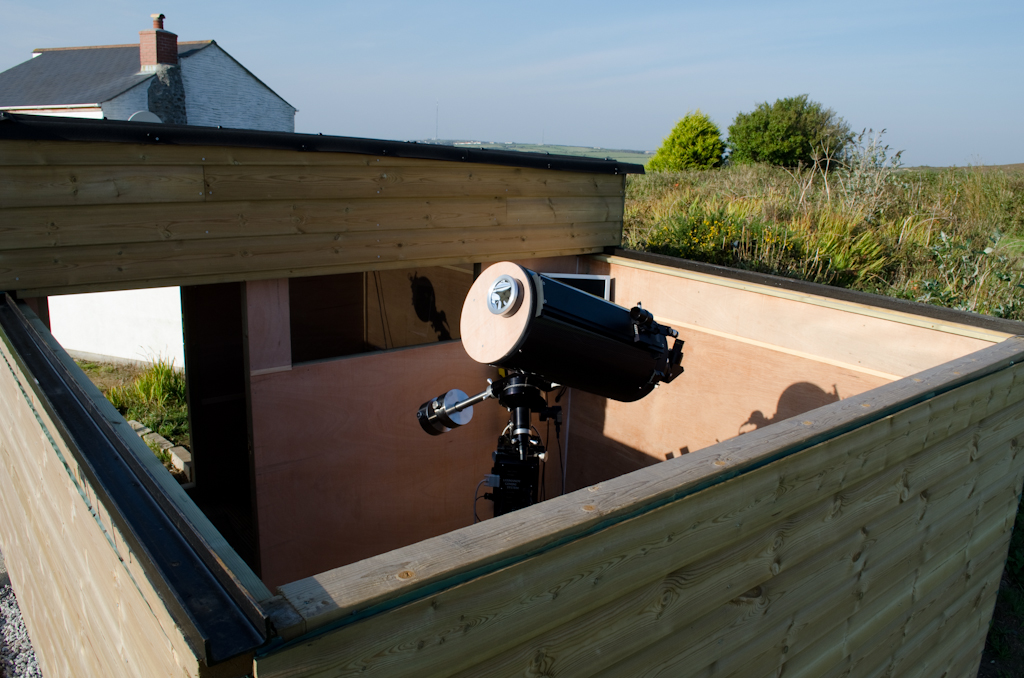

A warm room was constructed at the door end of the observatory. The partition between the cold and warm sections was constructed using a 50mm x50mm framework, which was then covered in 9mm plywood. A sheet of toughened glass was installed in the partition to allow sight of the scope area while remaining inside the warm warm. A door in the partition allowed access to the cold side. as well as allowing heat in the warm side to be retained.
The desk from the DBO 1 was reused but I did install a second monitor, keyboard, and mouse in the cold area, to allow control of the scope from there.

The observatory was completed in September.